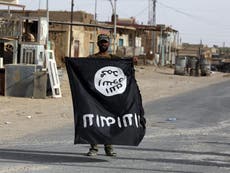What today’s events at London Bridge can tell us about Londoners’ sense of solidarity
Is our instinct to run towards danger, rather than away from it?

The way bystanders reacted – so far as it is now known – to today’s events in London Bridge is brave, impressive and laudable.
Like those who tried to tackle the attackers in Borough Market before them, the members of the public who jumped a man apparently intent on murdering people at random, undoubtedly saved lives and averted tragedies. Perhaps what has been happening is a quiet growing consensus that in such attacks people have a duty to help one another.
It’s a bit facile, maybe, to invoke past episodes of Londoners’ solidarity – the Blitz, the IRA campaigns in the 1970s and 1980s when they bombed the Old Bailey, Hyde Park and Harrods – but it was evidence of a strong spirit.
As the London mayor Sadiq Khan has said today: “the public who risked their own safety this afternoon” are “the best of us”.
Brave, then, yes; but was it right?
It certainly reminds the whole of London, and the country, that such incidents can arise without warning, in confusion, and it is rarely clear what the motivation is when the first and last thing that is known about an assailant is that they appear to be wielding a weapon.
In this age, a van and a kitchen knife can turn anyone into an assassin. The “franchising” of terror to autonomous individuals and groups, uncontrolled by any central authority, is a commonplace. A web connection, if that, is all that is needed to establish the most tenuous of links, and imbibe the toxic propaganda that will drive sane people to mass murder.
That is the big challenge is in this new era. We would need a police state – which we do not want – to attempt to eradicate terror, but even then some would escape detection.
Yet is it entirely right for the public to react in this way? Usually the authorities tell people to leave dangerous criminals alone, and leave it to the authorities. On this occasion the suicide vest was false – but what, actually, if it was real? What if the very acts of selfless heroism by those who took the man down actually triggered a bomb that might otherwise not have exploded? Or had done so with still more deaths and casualties than if everyone had fled the scene instead? Or what if someone panicked and an innocent was attacked by a mob?
The attackers, even a low-level one such as this, will always adapt their techniques to suit the changing reactions of the public – their victims.
Where once they might try to hijack a plane, the massive toughening of aircraft security has pushed them to softer targets – arenas, restaurants and so on.
This new and all-too predictable reaction of the public – to run towards danger rather than from it – might invite new, more deadly tactics by the terrorists. They might, in other words, try to find ways to draw their victims to them rather than making them run away.
The incident gives the lie, once again, to the notion that Londoners, like the residents of other large cities, are indifferent to their surroundings. Plainly they are the opposite.
Yet the authorities, if they want to preserve our safety, should give us a clearer more consistent advice in the event that we are caught up in such events. It is by no means clear what the right “right thing to do” actually is.



Join our commenting forum
Join thought-provoking conversations, follow other Independent readers and see their replies